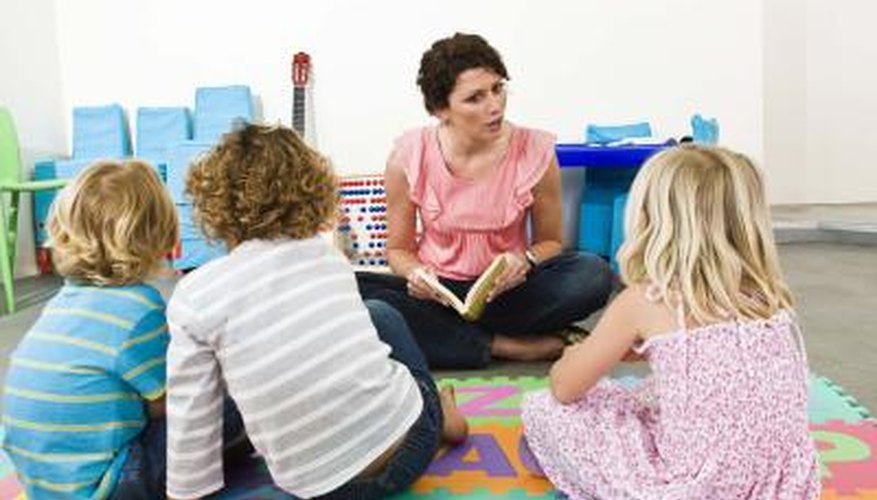Narrative text tells a story with a beginning, middle and end by using the elements of setting, characterisation, plot and theme. By using narrative text in the classroom, teachers can design lessons for students to apply higher-level thinking skills. Students can read age-appropriate literature and learn to infer meaning that is not explicitly stated and predict outcomes based on information. They become skilled at analysing literature in terms of the elements of narrative text.
Understanding Setting
The setting of a narrative text enhances the other aspects of the story. Setting tells where and when the story takes place. For example, in the story of Cinderella, the protagonist or main character lives long ago in a land far away. Cinderella starts out scrubbing floors in her stepmother's house, and in the end, rides off to the magnificent castle with Prince Charming. The contrast between where she started out and where she ended up is so strong we often refer to successful people as having lived a "Cinderella story." Students can compare and contrast the settings of different stories.
- The setting of a narrative text enhances the other aspects of the story.
- The contrast between where she started out and where she ended up is so strong we often refer to successful people as having lived a "Cinderella story."
Analysing Characters
Students learn to analyse characters by studying narrative text. In stories, there are many details that give clues to the personality, socioeconomic standing and emotional state of the character. Teachers instruct students to look at words and images describing the character's clothing and facial expressions. Students examine what the character says and how he reacts to others to draw conclusions. The character's actions while solving problems in the story are powerful clues about his personality.
- Students learn to analyse characters by studying narrative text.
- In stories, there are many details that give clues to the personality, socioeconomic standing and emotional state of the character.
Narrative Plot
By studying the plot of a narrative text, students can learn how to predict outcomes that make sense according to what has already happened. They learn how an author uses exposition to set the stage for plot developments and builds excitement with rising action until the climax or high point forces a plot resolution. As the plot unfurls, the reader learns about the characters and their qualities. In the case of Cinderella, her sweet and uncomplaining nature is rewarded at the end of the story, while the wicked stepmother gets what she deserves.
- By studying the plot of a narrative text, students can learn how to predict outcomes that make sense according to what has already happened.
- They learn how an author uses exposition to set the stage for plot developments and builds excitement with rising action until the climax or high point forces a plot resolution.
Identifying the Theme
After learning about the setting, characters and plot, students generally are led in a discussion about the underlying message of the story, or theme. There are themes that recur in literature, like loss of innocence, which is often called a coming-of-age story. Another popular theme is the capriciousness of fate. Cinderella has this type of theme. It is a reversal-of-fortune story with a happy ending. To extend the lessons of narrative text, teachers can ask their students how the Cinderella story might give people hope and inspiration in their lives.
- After learning about the setting, characters and plot, students generally are led in a discussion about the underlying message of the story, or theme.
